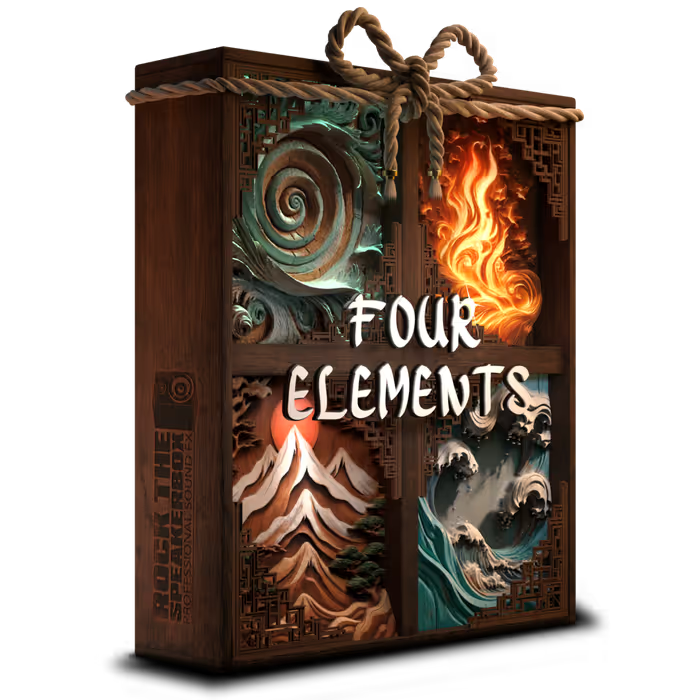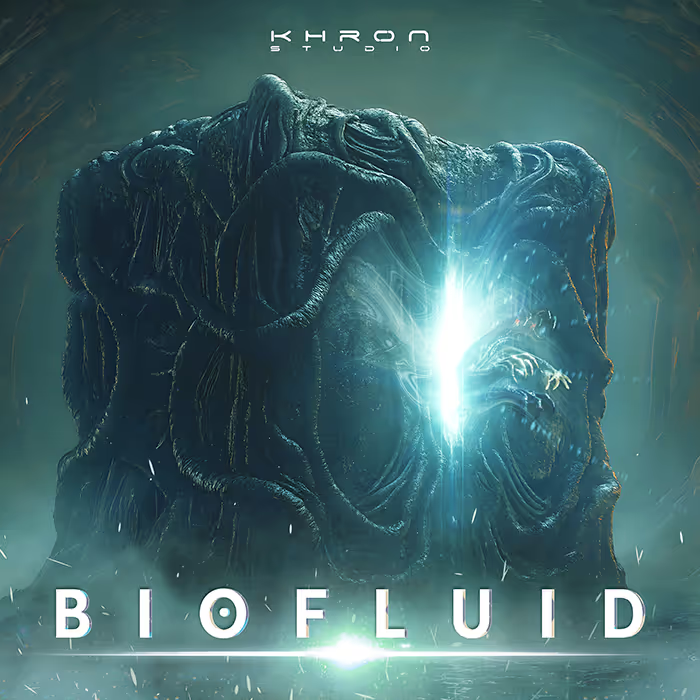Ridley Scott’s Napoleon just made the 96th Oscars Shortlist for Best Sound. Leading the sound editorial team were 5x-Oscar nom’d supervising sound editor/sound designer Oliver Tarney and Oscar nom’d supervising sound editor/sound designer James Harrison.
Here, the pair answer questions on how they handled the warfare sounds, including building battle walla, sourcing effects and recording new sounds of black powder guns and cannons, whooshes, and horses, recording sounds of ice, using sound to set the tone of Napoleon’s empty victory at Moscow, and so much more!
NAPOLEON – Official Trailer
Q: When did you get involved with the film and what were director Ridley Scott’s initial asks for sound? Was there a specific scene or set of sounds he wanted you to tackle first?
A: A couple of months before we were due to start on the project I had a call about doing some early sound design for the very opening of the film – a very stylized, slow-motion sequence depicting Marie Antoinette’s capture and beheading. I thought that was just going to be a one-off but it led to us doing more design work for other stylized moments, all whilst they were still filming.
We’ve worked with Ridley many times and have a workflow that works well…
We’ve worked with Ridley many times and have a workflow that works well; we are given a sequence as well as general notes from Ridley, we do a first pass on it, and then ask Ridley to review. He then gives more detailed notes about what he likes or dislikes, and we go back and do another pass.
We then carry those creative sensibilities forward as we go on to the next sequence. Once the film is assembled as a whole, Ridley will start a discussion with us about the sound arc of the film. Throughout the process, he provides further concise notes about the overall shape and whether certain moments are working.
As a result, our work continually evolves. The opening sequence did change quite significantly by the end of the job, but the pulse, the tonal drones, and the essence of the original design are from work that was done on that very first day, a couple of months before we were due to even start in post.
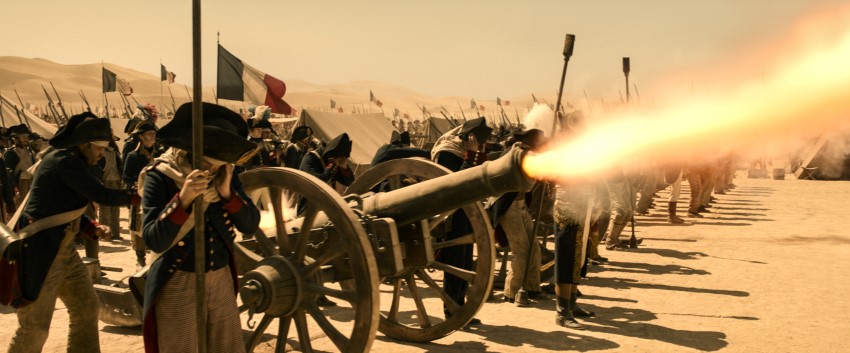
Q: What went into collecting the sounds of warfare for this era – the late 1700s to early 1800s? Did you record specific rifles, pistols, cannons, sabers, horses, etc.? Were there any helpful libraries for warfare sounds?
A: A project like this is too big and diverse to try recording every sound from scratch, but we always want to bring in as much new material as possible to keep things fresh. We had some existing recordings of weaponry of the era and horses, and we combined these with new recordings we made – more specific black powder weaponry, horse vocals/hooves, design elements, and whoosh-bys for cannons and muskets.
…we combined these with new recordings we made – more specific black powder weaponry, horse vocals/hooves, design elements…
We were in close contact with the military advisers on the film who, as well as advising us on the crowd aspects, really helped give us an idea of the specific weaponry and ammunition that would have been used at the time. That led to some creative thinking when it came to the material we wanted to capture and record.
The foley team – headed up by Hugo Adams – also made a very significant contribution in terms of the handling and movement of the individual swords and sabers, to really put the audience as close to the action as possible.
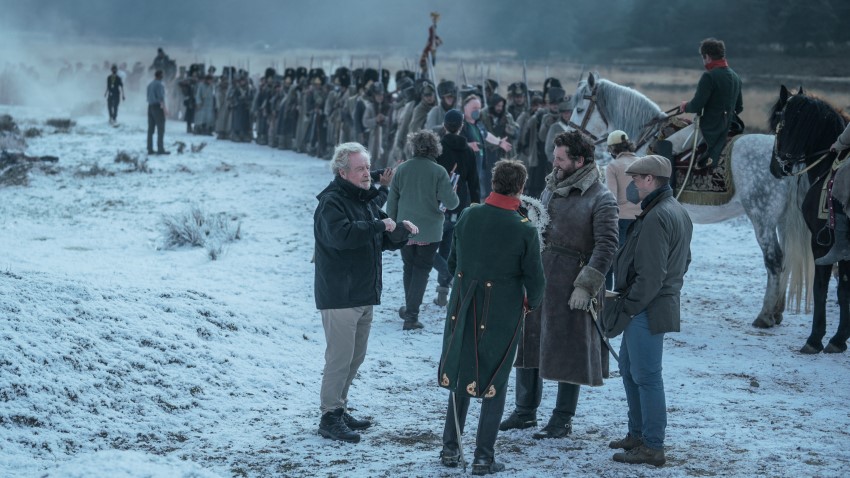
Q: Did you do any other field recordings for the film? If so, where did you go, what did you capture, and what was your recording setup?
A: The battle of Austerlitz is a huge set piece, taking place on a frozen lake, so it was important to have a broad range of ice material. The Sanken high-frequency microphones are especially good at taking something small and making it sound huge. They allow us to pitch down recordings by an octave or two without losing fidelity. There was a lot of top-end detail present in that sequence that we recorded using those high-frequency microphones. We then added in giant ice sounds and huge explosions which resulted in really full frequency range and contrast.
I also used Kyma software by Symbolic Sound to morph recordings of ice with explosions and water.
I also used Kyma software by Symbolic Sound to morph recordings of ice with explosions and water. A lot of the elements in that sequence were designed in this way, using Kyma, which has been a fantastic sound design tool on many projects.
Amongst us all, we have a vast array of recorders and microphones, for example: Sankens, DPAs, Sennheisers, and Neumanns and we’re recording on Sound Devices and Zoom recorders. Nowadays, it really is a question of deciding which setup not to use to record as there is so much choice!
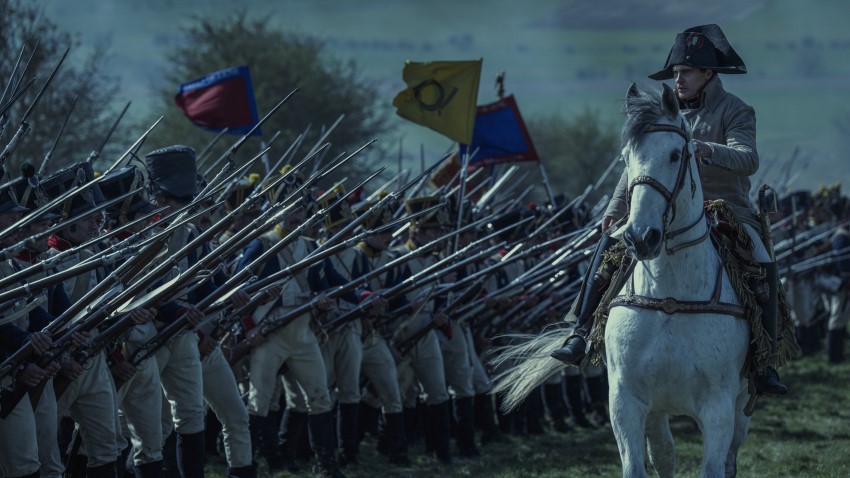
Q: How did you handle the battle/army walla?
A: As mentioned earlier, we had access to the military advisor who was present during the shoot. That was incredibly useful for us when recording the army walla. We used some FX crowd to add weight and scale in the big battles, but everything that you hear in the foreground, or anything specific to the narrative in terms of callouts, was all recorded in outdoor crowd sessions utilizing the advice we had received to maintain as much realism and accuracy as possible.
…everything that you hear in the foreground, or anything specific to the narrative in terms of callouts, was all recorded in outdoor crowd sessions…
A key element, alongside the army walla, is the military drums that are heard throughout the film. These were used most obviously in the marching sequences to regulate the cadence of the soldiers and also to keep morale up during battles. One thing we hadn’t realized before this project was that they were also used as a form of communication for the soldiers, for example, when to load their rifles and when to fire.
At the start of the project, we added the drums wherever we felt it was appropriate, but as we learned more about their usage in reality, it was clear they should be a more specific and featured element.
We discussed this with Tony Lewis from the music department, and then James and Tony had an outdoor recording session with military drummers. We were focussed on maintaining a distinction between the French drummers and the British drummers, whilst covering all the variances that we would need, whether in battle or marching.
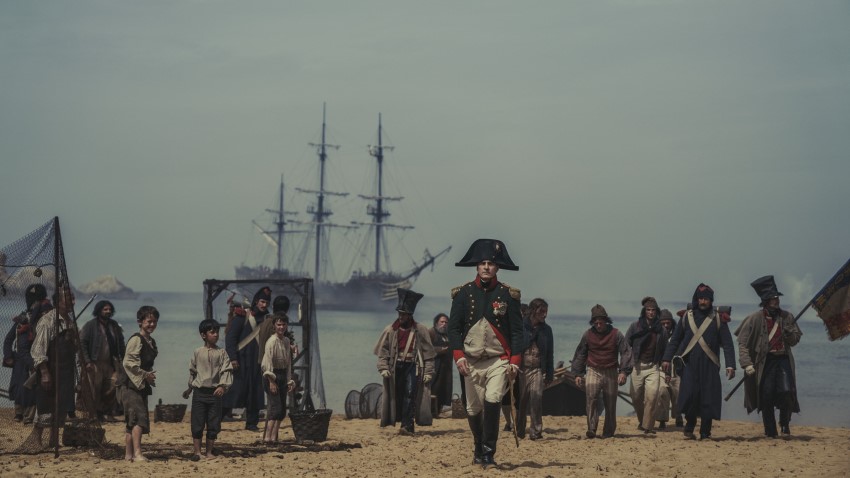
Q: Although there are many battles in the film, they’re all unique in their own way. Can you talk about some of the key sonic details for each battle; what were some specific sounds for each battle that made it feel unique? For instance, Toulon had the ships blowing up and Waterloo had the rain….
A: Ultimately, any historical epic like this is a huge challenge in itself as the size and scale of what you need to do is actually quite daunting. But the biggest challenge is trying to keep things fresh and original. We’ve found that working in different genres – for example, sci-fi or fantasy – the scope for sound design can be immense. The audience can have no preconceptions about what things should sound like, so you have a lot of freedom for experimentation. On a film like this, the audience does have preconceptions (as they know what a horse, musket, and cannon should sound like!), so the challenge is trying to come up with new ideas that can push the boundaries for an audience, or engage them in a different way.
…the first battle at Toulon is high energy but lacks precision and is a lot more chaotic and dirty.
One of these concepts that we discussed very early on with Ridley was to have progression through the film, a sonic change in the sound design that mirrored Napoleon’s strategic evolution. As the battles progress throughout the film, as Napoleon evolves and becomes more accomplished as a leader, the sound mirrors this.
Video: Behind the sound of Napoleon
Want to learn more about the sound of Napoleon? Check out this in-depth feature on the sound from our friends at Soundworks Collection:
For example, the first battle at Toulon is high energy but lacks precision and is a lot more chaotic and dirty. Napoleon himself is extremely anxious, almost hyperventilating at the start and this is mirrored by his skittish horse. The materials we made and used for the muskets and cannons were intentionally a bit loose, and in the mix we very much wanted it to be a cacophony, a muddle of sound. It’s only when he captures the enemy cannons (when Napoleon knows that he will win the battle) that there is a big shift in the mix, and we hone in on him and the cannons, and the battle is pushed into the background.
…that contrasts with Austerlitz where his army, by then, is a well-oiled machine. It’s precise and efficient.
Then that contrasts with Austerlitz where his army, by then, is a well-oiled machine. It’s precise and efficient. We made the muskets, cannons, and horses cleaner and tighter, using different elements and different editing and mixing techniques to make everything clearer and more precise.
With Waterloo, we had a mixture of both. The initial cannon volleys are ordered and methodical, but as the battle progresses and Napoleon struggles to engage with the fight, things become a bit more desperate. As he realizes his time is running out, the precision goes and the soundtrack becomes more chaotic and more frenetic. So by the end, we have almost come full circle.
In addition to coming up with different materials for the various locations during these sequences, we had to have the main concept of progression at the forefront of our minds. It added another level of complexity to an already challenging tracklay!
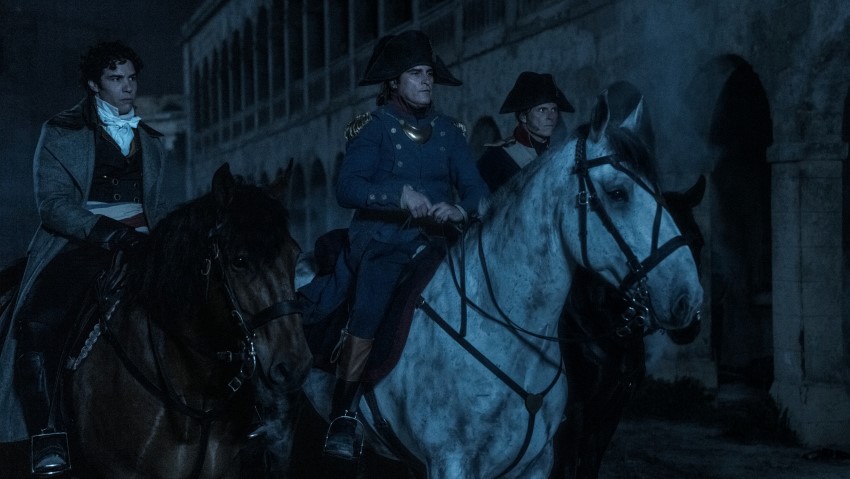
Q: There’s a great scene where Napoleon makes it to Moscow, only to find the city abandoned. He walks into the palace, and the throne room is empty except for birds. Can you talk about your sound work on that scene?
We focused in on Napoleon at this point, really minimizing the presence of his entourage.
A: That scene ties in very well with the theme of the film in terms of the relationship between Napoleon and Josephine. They seem to have had a very complex relationship and power dynamic within that. If these military campaigns compensated in part for something lacking in their relationship then the abandoned city has significance as it leaves him without the sense of victory or control he craves.
We focused in on Napoleon at this point, really minimizing the presence of his entourage. This combined with the huge, reverberant hall with the sound of sporadic, anxious wing flaps evoked loneliness very effectively, and was another great contrast to the chaos of battle.
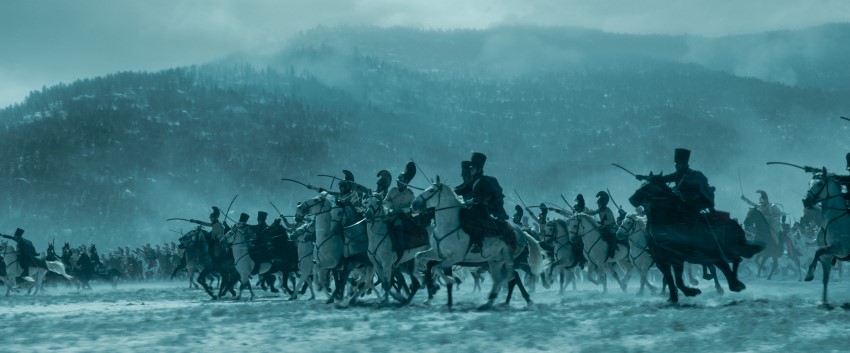
Q: What was your favorite scene for sound design? Can you talk about your sound work on it?
A: There are so many great scenes to choose from but I would have to go with Austerlitz as it feels like such a unique sequence. There’s Napoleon’s very considered, meticulously planned setup, and then once the ambush breaks, it’s mayhem. The variance in the battle once the retreating army hits the ice gave us great dynamics to play with, and meant the sound design could evolve throughout the sequence.
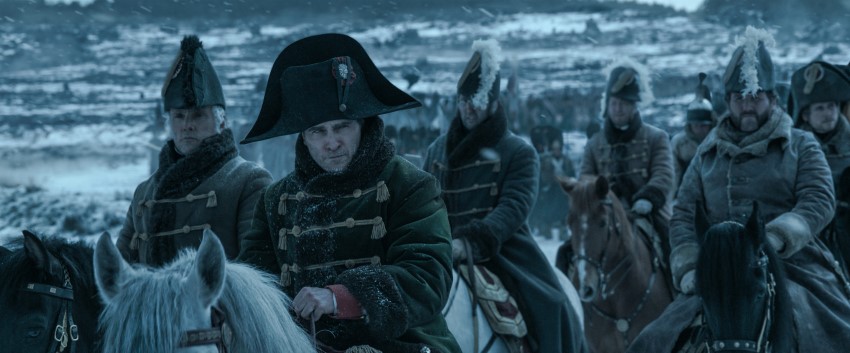
Q: What scene was the most challenging in terms of sound design or sound editorial? Why?
A: Again, I think that it would have to be the Austerlitz scene. We had so much scope for sound and that made it challenging at times to create a focus and make sure that the narrative was followed whilst still being exciting and engaging. Honing the balance between the different disciplines in the mix took time, but the result was well worth the effort.
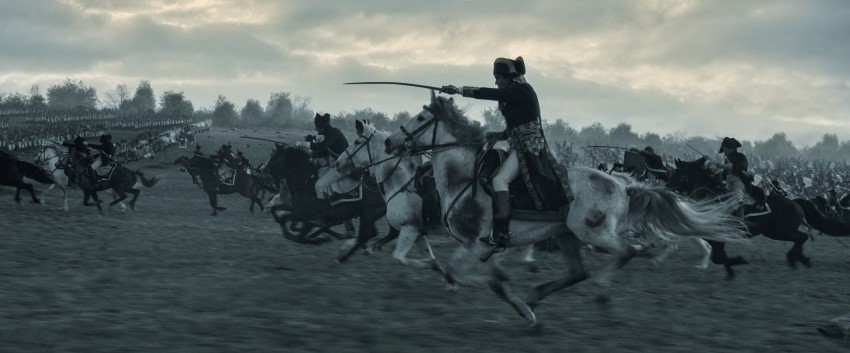
Q: What are you most proud of in terms of your sound work on Napoleon?
A: Keeping the right balance between an intimate story between two people, and the epic scale of Napoleon’s military campaign. It made for a wonderfully varied, and dynamic sound job.
A big thanks to Oliver Tarney and James Harrison for giving us a behind-the-scenes look at the sound of Napoleon and to Jennifer Walden for the interview!



